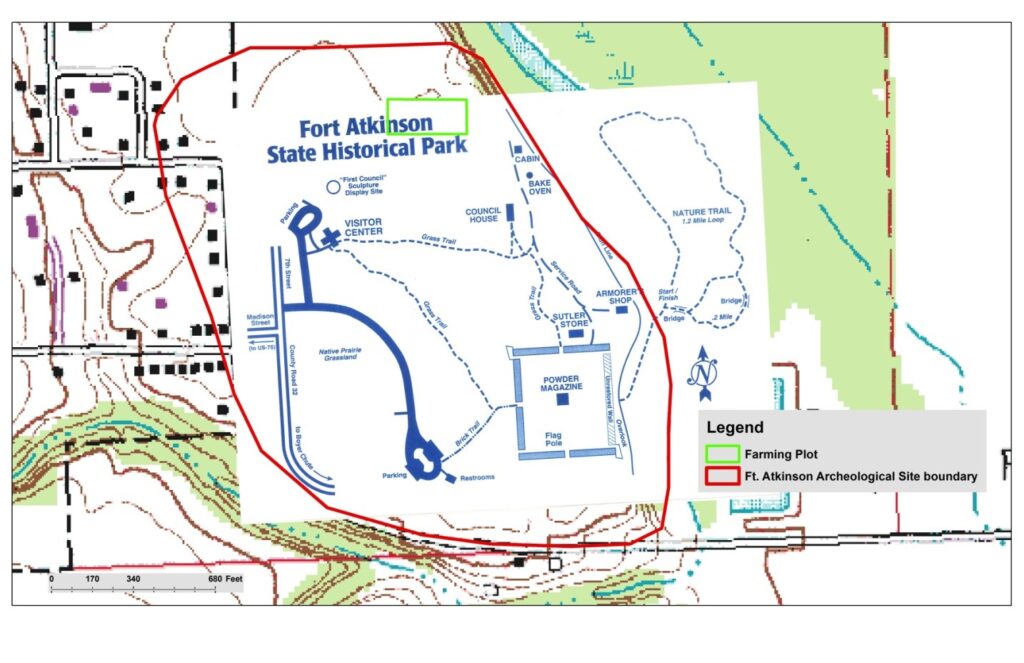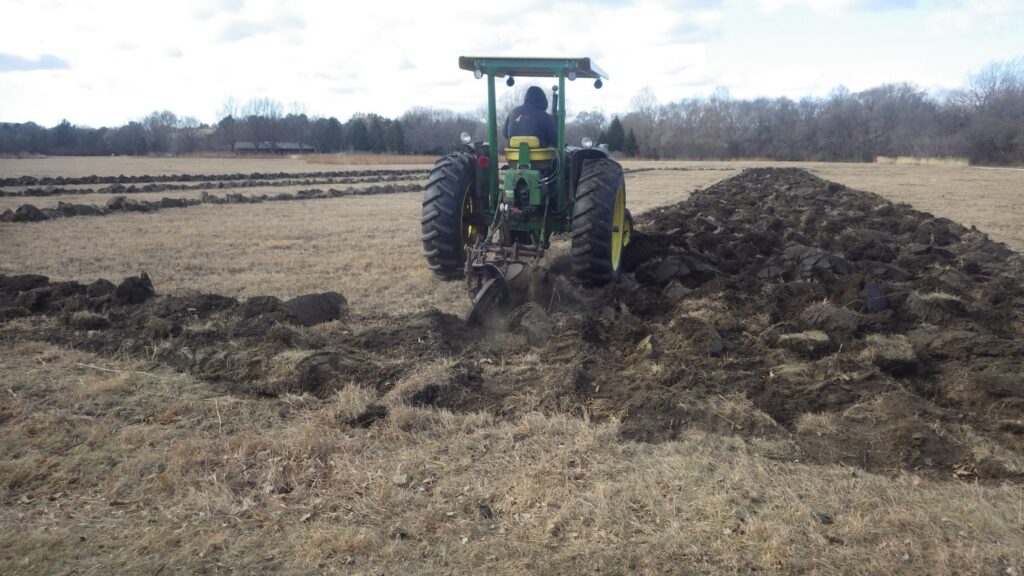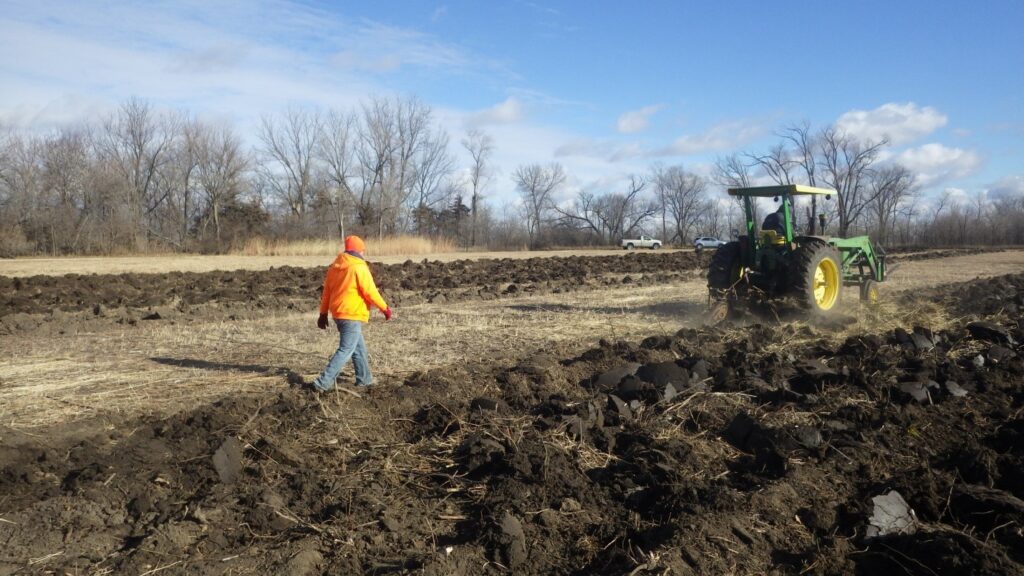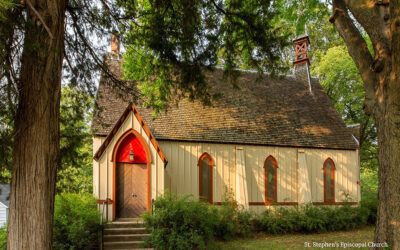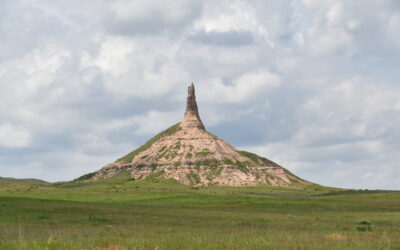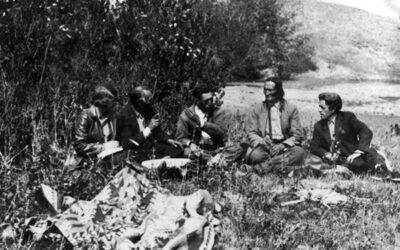On Dec 6, 2017, a plow sliced through the sod at Ft. Atkinson State Historical Park (SHP) for the first time in 55 years. Ft. Atkinson was the first military post west of the Missouri River and was occupied from 1820-1827 before being left to slowly decay. However, the location of the fort was never forgotten. The first settlers to Ft. Calhoun took bricks from the ruins of the fort to use in constructing the first homes in the new town. The entire fort complex and surrounding area was cultivated for nearly 100 years before the State of Nebraska purchased the land in 1964 to create the SHP (Figure 1).
In the fall of 2017 Jason Grof, the superintendent of the park, contacted Nebraska State Historical Society (NSHS) Archeologist Nolan Johnson to help choose an area in the park to plow for future use in farming demonstrations. Grof wanted to till 3-4 acres, but that proved to be impossible given the density of archeological features at the park. At its height, Ft. Atkinson had more than thirty buildings and functioned more like a frontier town than a military post. The location of the remains of these structures is well documented thanks to work of late NSHS archaeologist Gayle Carlson. Using maps from Carlson’s 1997 publication, Johnson plotted an area of roughly one acre. Located in the northeast corner of the park, the rectangular area is wedged between five archeological features (Figure 2).
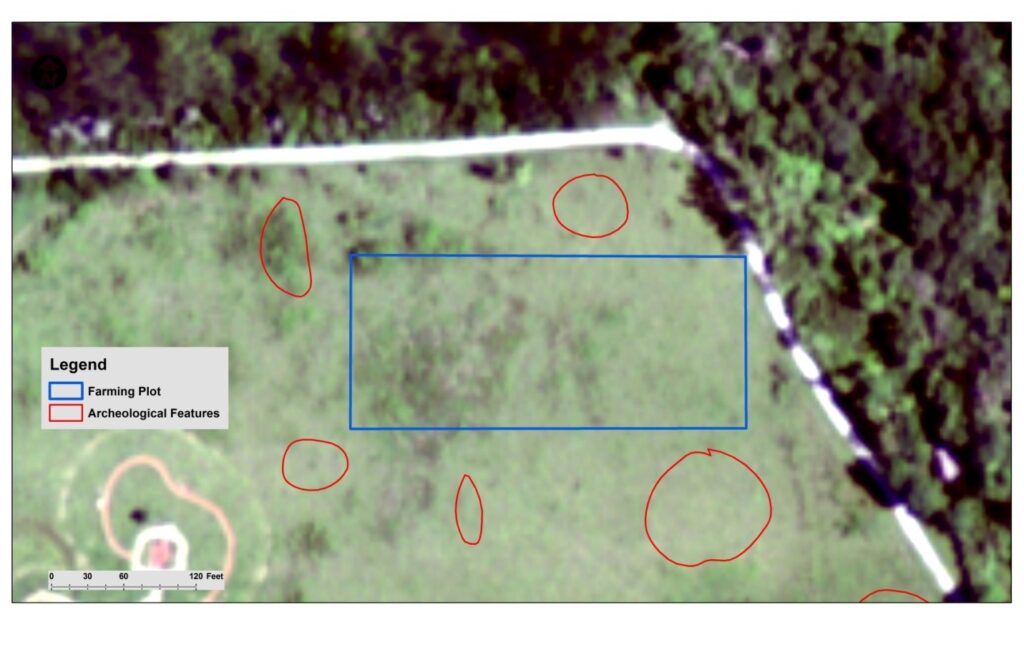 On a cold December morning Johnson went to Ft. Atkinson to stake out the location to be plowed and to monitor the work to insure that no significant archeological remains were disturbed (Figure 3 and 4). With the help of a local volunteer (with his disc plow) and Superintendent Grof the work proceeded smoothly. Only a few scattered brick fragments and small limestone chunks, which were already disturbed from past farming of the area, were uncovered. Johnson will return in the spring when the area is disked smooth prior to planting to ensure the rich archeological record of the park is protected for future generations.
On a cold December morning Johnson went to Ft. Atkinson to stake out the location to be plowed and to monitor the work to insure that no significant archeological remains were disturbed (Figure 3 and 4). With the help of a local volunteer (with his disc plow) and Superintendent Grof the work proceeded smoothly. Only a few scattered brick fragments and small limestone chunks, which were already disturbed from past farming of the area, were uncovered. Johnson will return in the spring when the area is disked smooth prior to planting to ensure the rich archeological record of the park is protected for future generations.
The park plans to use the newly tilled area in two ways. First, the park will showcase antique farming equipment that will work the land on periodic living history weekends throughout the summer and fall. The tilled area will also be used to grow crops that the soldiers grew in the 1820’s.
While in use, Ft. Atkinson was used as an experiment to see if frontier forts could be self-sustaining. The soldiers spent much of their time on agricultural pursuits. So much in fact, that many soldiers complained and regretted leaving family farms for adventure and excitement in the army only to end up herding pigs in Nebraska. They raised pigs and cattle, farmed over 500 acres, had a dairy herd and creamery, ground their own grain in an ox power flourmill, and even had their own distillery. The park plans to plant potatoes and oats, both crops that soldiers grew during their stay at the fort, in the inaugural season this spring. Plan to visit Ft. Atkinson this summer on a living history weekend to see crops grow at the fort once again!
References
- Fort Atkinson at Council Bluffs by Sally A. Johnson from Nebraska History Issue 38 (1957)
- Soldiers as Farmers: Army Agriculture in the Missouri Valley, 1818-1827

